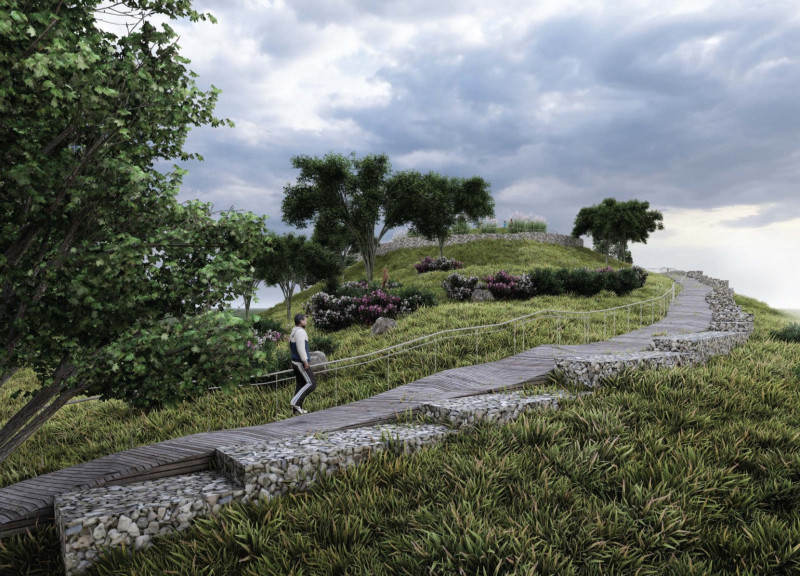5 key facts about this project
Central to the project's identity is its architectural layout, which has been meticulously planned to facilitate a seamless flow between spaces. The circulation paths are intuitive, allowing users to navigate effortlessly through various areas. Essential zones are integrated thoughtfully, ensuring that spaces intended for gathering, work, and relaxation are both accessible and inviting. This layout is further enhanced by the strategic placement of windows and doors, which maximize natural light and ventilation while framing views of the surrounding landscape.
The use of materials in this architectural design underscores its commitment to sustainability and aesthetic coherence. High-strength reinforced concrete forms the structural backbone of the project, providing stability and durability. In contrast, sustainable timber is employed for cladding and interior finishes, imparting warmth and a tactile quality that contrasts with the more rigid concrete elements. The inclusion of low-emissivity glass not only promotes energy efficiency through passive solar gains but also connects the indoor environment to the outside world, encouraging occupants to engage with nature. Weathering steel accents add a modern industrial touch, reflecting the site’s character while showcasing longevity through its evolving surface.
Unique design approaches employed in this project include biophilic design principles, which prioritize a connection to nature. This is achieved through features such as green roofs, which enhance biodiversity and aid in stormwater management, as well as outdoor spaces that encourage interaction with natural elements. The project strategically integrates landscape architecture to create serene gardens and functional outdoor areas, promoting mental well-being and active lifestyles within the community.
Another distinctive aspect of the project is its responsiveness to climatic conditions. The architectural design incorporates shading devices and thermal mass strategies to regulate indoor temperatures, minimizing reliance on mechanical heating and cooling systems. This ensures comfort for users year-round while reducing the building's overall environmental footprint.
The interplay of different architectural elements and materials culminates in a design that is not only visually appealing but also functionally robust. Each component is carefully considered, contributing to the overall narrative of sustainability and community engagement. The architectural choices reflect a deep respect for the environment and the people who inhabit these spaces.
As you explore the architectural presentation of this project, consider reviewing the architectural plans, sections, and designs that reveal the complexities and intentionality behind each decision made. Each facet of the project contributes to a comprehensive understanding of its design ideas and the architectural philosophies that have shaped its realization. This in-depth exploration showcases how thoughtful architecture can positively influence both its immediate and broader context.


























